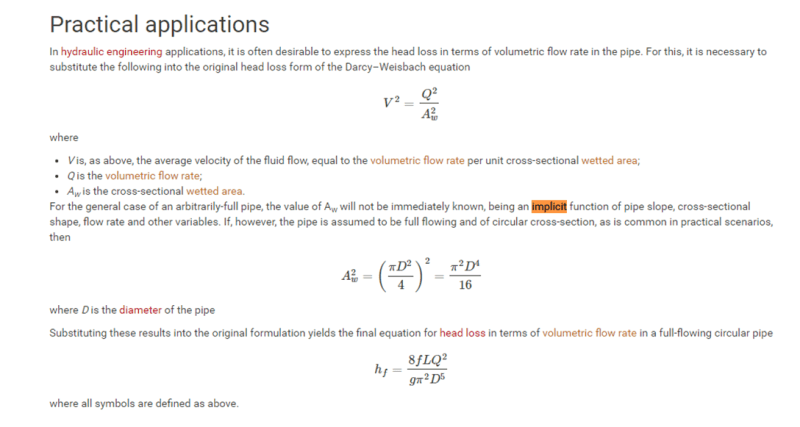Hi,
I am looking over a Civil Engineer's calculations for pipe sizing. He uses the Rational Method to calculate rain fall. Then he uses the Manning Equation to size the 24" diameter pipe assuming the pipe is 94% full and a 1% slope.
As a mechanical engineer, I've sized smaller diameter (not 24" diameter) Schedule 40 or 60 stainless pipe using Bernoulli's law and the Moody chart. My understanding the Manning's equation is empirical equation for open channel flow that does not consider static head.
Why do Civil Engineers use Manning versus Bernoulli and the Moody chart? Does the Moody chart assume a pipe that is full while Civil Engineers are sizing larger size pipe where the pipe is not full? As such, the pipe could be treated as a open channel for larger diameters?
Thank you,
A mechanical engineer trying to figure a civil engineers calcs
I am looking over a Civil Engineer's calculations for pipe sizing. He uses the Rational Method to calculate rain fall. Then he uses the Manning Equation to size the 24" diameter pipe assuming the pipe is 94% full and a 1% slope.
As a mechanical engineer, I've sized smaller diameter (not 24" diameter) Schedule 40 or 60 stainless pipe using Bernoulli's law and the Moody chart. My understanding the Manning's equation is empirical equation for open channel flow that does not consider static head.
Why do Civil Engineers use Manning versus Bernoulli and the Moody chart? Does the Moody chart assume a pipe that is full while Civil Engineers are sizing larger size pipe where the pipe is not full? As such, the pipe could be treated as a open channel for larger diameters?
Thank you,
A mechanical engineer trying to figure a civil engineers calcs

